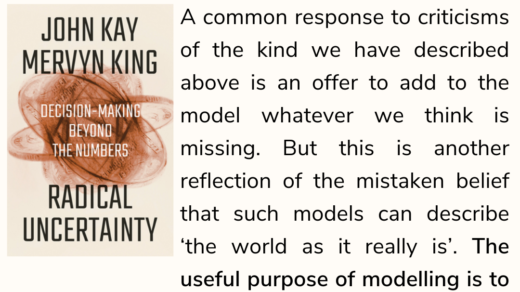Before reading on, you may want to think of your own answer to the following questions: In a well-run insurance company, if you randomly selected two qualified underwriters or claims adjusters, how different would you expect their estimates for the same case to be? Specifically, what would be the difference between the two estimates, as a percentage of their average? We asked numerous executives in the company for their answers, and in subsequent years, we have obtained estimates from a wide variety of people in different professions. Surprisingly, one answer is clearly more popular than all others. Most executives of the insurance company guessed 10% or less. When we asked 828 CEOs and senior executives from a variety of industries how much variation they expected to find in similar expert judgments, 10% was also the median answer and the most frequent one (the second most popular was 15%). A 10% difference would mean, for instance, that one of the two underwriters set a premium of $9,500 while the other quoted $10,500. Not a negligible difference, but one that an organization can be expected to tolerate. Our noise audit found much greater differences. By our measure, the median difference in underwriting was 55%, about five times as large as was expected by most people, including the company’s executives. This result means, for instance, that when one underwriter sets a premium at $9,500, the other does not set it at $10,500—but instead quotes $16,700. For claims adjusters, the median ratio was 43%. We stress that these results are medians: in half the pairs of cases, the difference between the two judgments was even larger. The executives to whom we reported the results of the noise audit were quick to realize that the sheer volume of noise presented an expensive problem. One senior executive estimated that the company’s annual cost of noise in underwriting—counting both the loss of business from excessive quotes and the losses incurred on underpriced contracts—was in the hundreds of millions of dollars. No one could say precisely how much error (or how much bias) there was, because no one could know for sure the Goldilocks value for each case. But no one needed to see the bull’s-eye to measure the scatter on the back of the target and to realize that the variability was a problem. The data showed that the price a customer is asked to pay depends to an uncomfortable extent on the lottery that picks the employee who will deal with that transaction. To say the least, customers would not be pleased to hear that they were signed up for such a lottery without their consent. More generally, people who deal with organizations expect a system that reliably delivers consistent judgments. They do not expect system noise.
A follow-up book from Daniel Kahneman(Thinking Fast and Slow) alongside with 2 other co-authors. This book looks at the issue of noise and how it impacts governments, institutions, organizations and all of us.
It aims to break down system noise (defined as undesirable variability in the judgments of the same case by multiple individuals in the case of the law) into 2 main components:
- Level noise is variability in the average level of judgments by different judges.
- Pattern noise is variability in judges’ responses to particular cases.
Overall, I think there are some really interesting implications made in this book that I’ll share more in the upcoming excerpts. Ultimately, every system and institution is inherently “noisy”. What is important is finding the right balance between installing rigid and inflexible processes or leaving things totally up to the random and subjective judgement of each individual.


